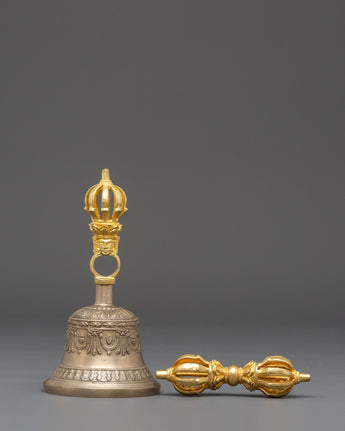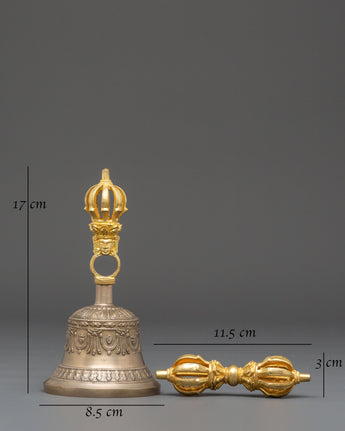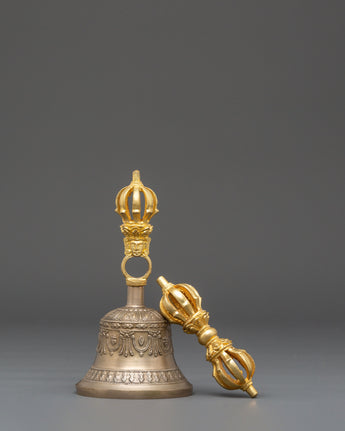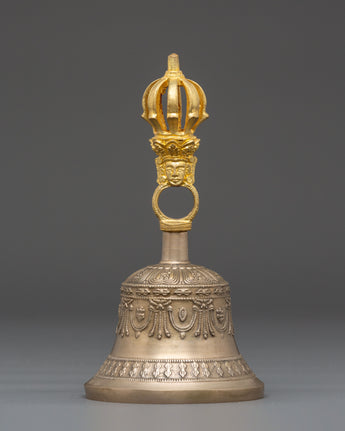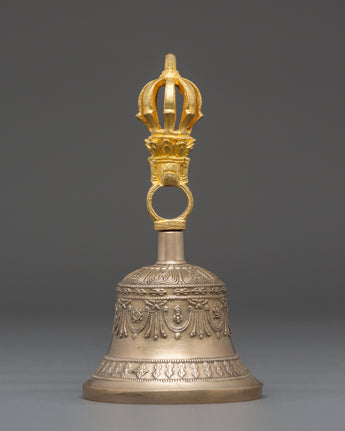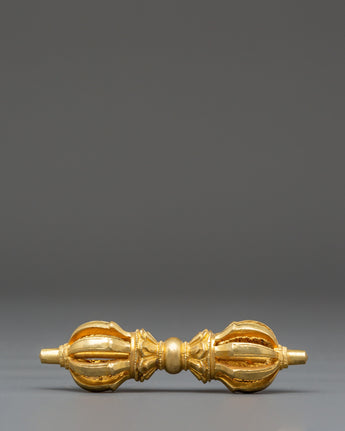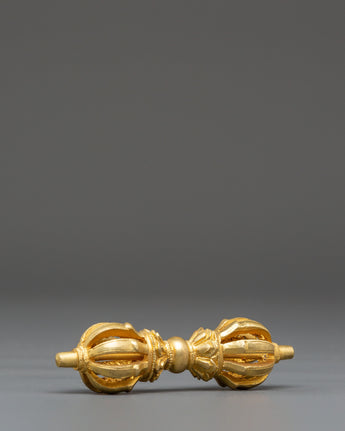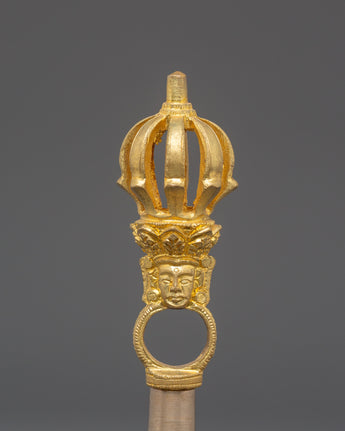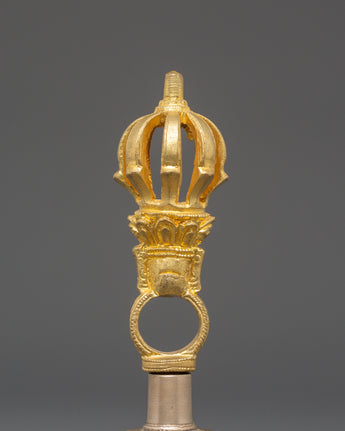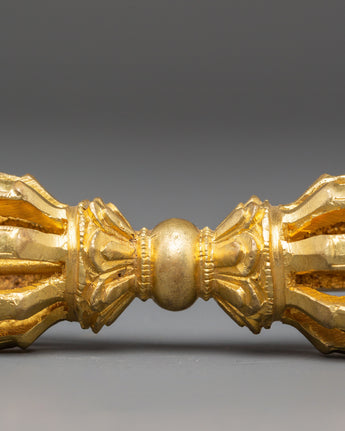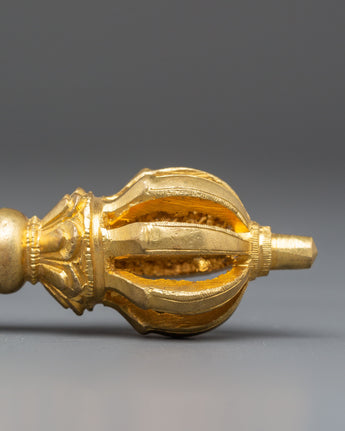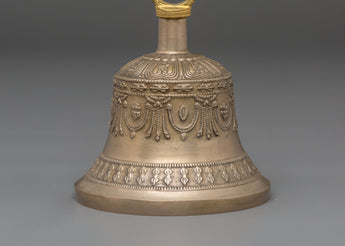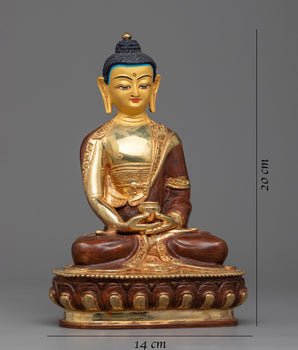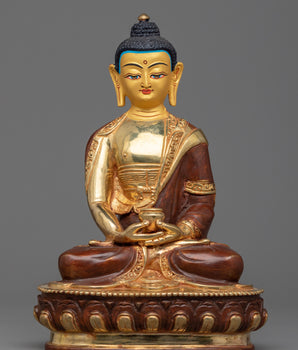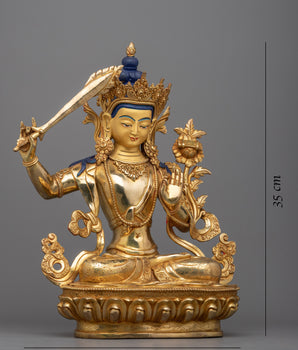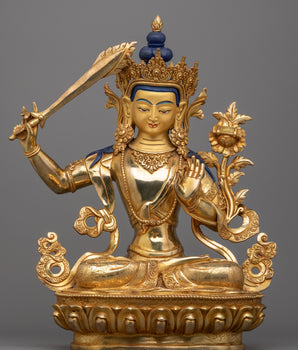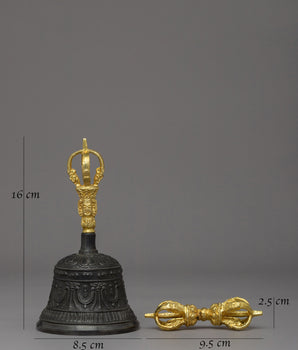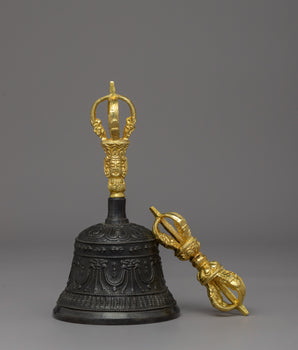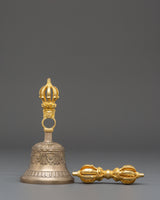
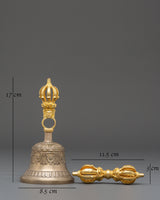
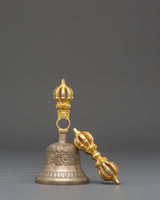
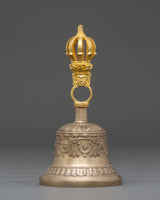
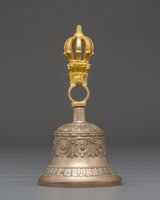
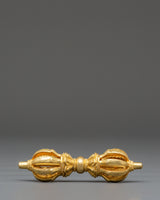
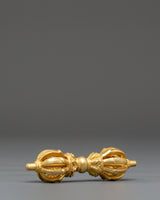
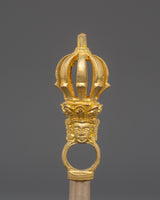
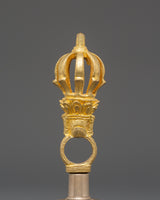
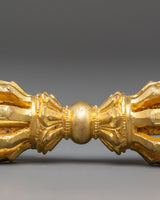
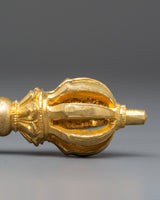
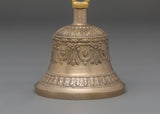
Bell and Vajra for Ritual Ceremonies | Symbol of Wisdom and Compassion

100% AUTHENTIC

HANDMADE

FREE SHIPPING
Handmade Brass Bell and Vajra for Ritual Ceremonies | Tibetan Buddhist Altar Set
-----------------------------------------
Vajra
Size: 3cm(Height) x 11.5cm (Width)
Weight: 0.11kg
Bell
Size: 17cm(Height) x 8.5cm(Width)
Weight: 0.26kg
Total Weight: 0.37kg
Materials: Brass Body, Bronze
--------------------------------------------
About Vajra & Bell:
This Bell and Vajra for Ritual Ceremonies pair represents the essence of knowledge and compassion, the twin qualities at the center of Tibetan Buddhist philosophy. The Vajra, made of brass and bronze, measures 11.5cm in width and 3cm in height. The Bell is 17cm tall and 8.5cm wide, weighing a total of 0.26kg. The bell signifies prajna, or the feminine principle of wisdom, while the vajra represents upaya, the male concept of skilled methods. When used together in tantric ceremonies, they represent the union of emptiness and form, enlightenment achieved via the perfect balance of knowledge and loving action.
The brass and bronze craftsmanship of this sacred set exemplifies great traditional creativity. The bell is delicately etched with auspicious designs and features a dorje handle, while the vajra's polished golden finish enhances its sacred glow. Each detail, from the carved god faces to the symmetrical prongs of the vajra, holds profound meaning rooted in Vajrayana meditation. This set, whether used in ceremonies, meditation, or on an altar, promotes spiritual balance and inner awareness.
In Tibetan Buddhism, the Bell and Vajra are interdependent ritual instruments that embody the balance of wisdom and compassion. Ringing the bell clears negative energy and awakens the divine presence, while holding the vajra channels the indestructible power of enlightenment. Together, they remind practitioners of the path to ultimate truth and union.
Introduction to Vajra & Bell:
The vajra, meaning "diamond" or "lightning" in Sanskrit, is a significant symbol and ritual instrument in Hinduism and the Buddhist tradition, particularly in the Vajrayana ("diamond way") tradition, from which it derives its name.
The Tibetan Dorje represents the indestructibility and efficiency that overcome all obstacles. Symbolically, Dorje Vajra destroys ignorance. In Tibetan Buddhist rituals, the vajra is often paired with the bell, representing the masculine and feminine, the yin and yang, as well as the balance between practical action and compassion. The shape of the Tibetan Dorje is symmetrical, the two pyramidal heads representing samsara and Nirvana, which cancel each other out in its center, thanks to the ring of Emptiness. Placing a Dorje at home would have positive virtues against the various attacks we suffer.
The bell or the drums are the feminine aspect of the perfection of wisdom, which directly realizes Emptiness. Vajra or Dorje represents the male aspect as a method or skillful means, embodying the indestructible nature of the absolute. Together, they symbolize the blessing mandala of a practitioner's main yidam deity.
How do you set up your own Buddhist Shrine?
-Find a clean, quiet, and uncluttered spot.
Please set up an altar table and cover it with an altar cloth that resonates with you.
-Place your sacred item (statue, thangka, or a picture of Buddha) at the center.


